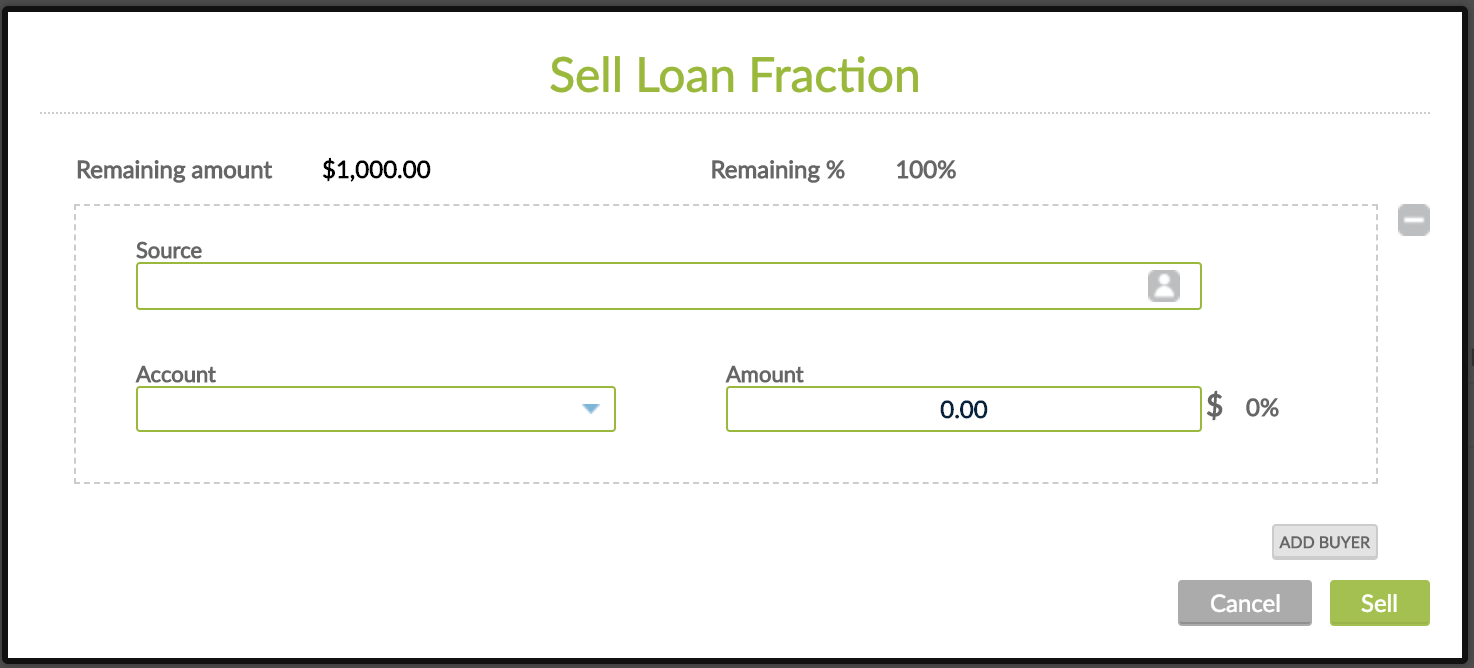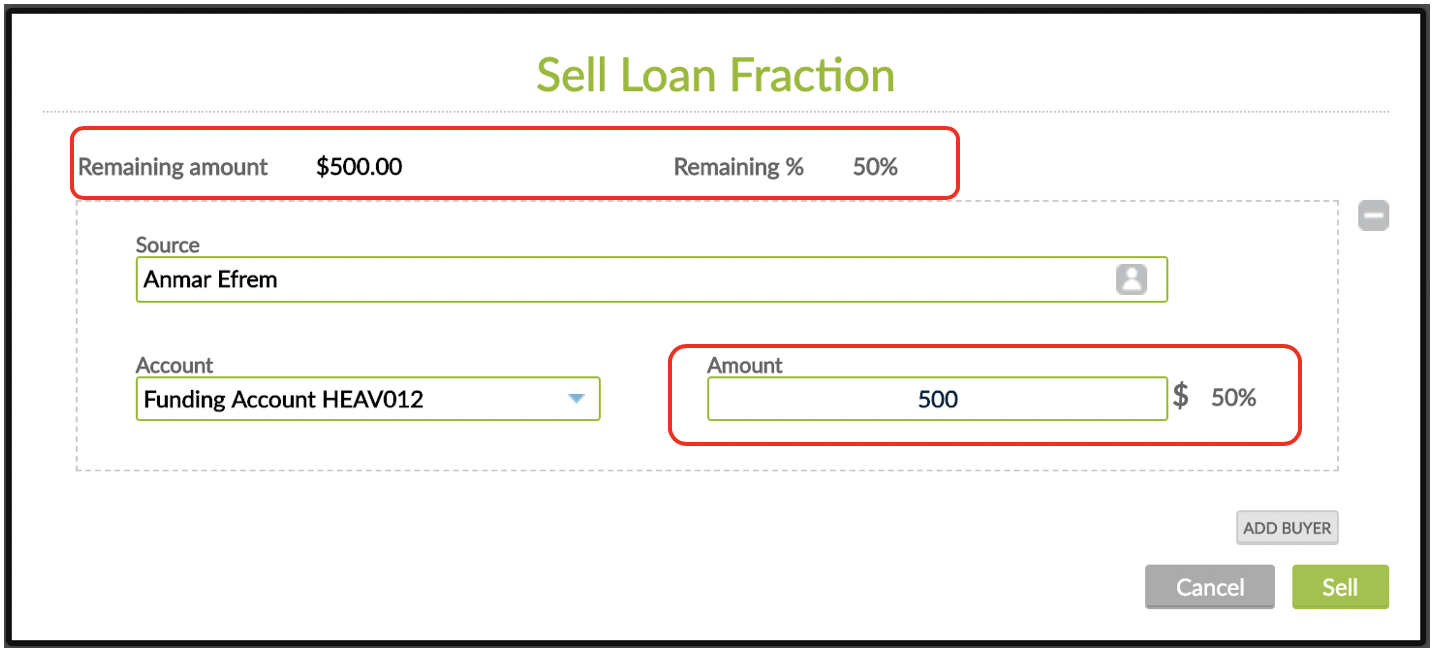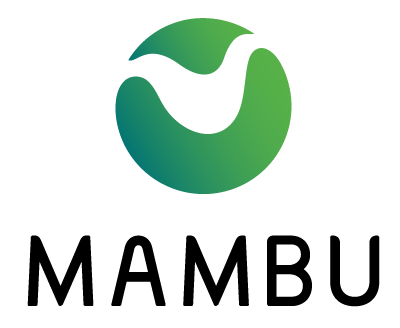- 26 Aug 2022
- 4 Minutes To Read
- Print
- DarkLight
- PDF
Secondary Marketplace for Peer-to-Peer Loans
- Updated On 26 Aug 2022
- 4 Minutes To Read
- Print
- DarkLight
- PDF
As of March 15, 2022, Mambu no longer offers the peer-to-peer (P2P) lending feature (also known as loan fractionalization).
Existing customers already using the P2P lending feature, will continue having access to it. However, any new enhancements or changes of this feature have ceased.
If you have any questions, please contact us through Mambu Support.
The Secondary Marketplace is where you can sell and buy loan fractions, allowing a loan funder to sell a portion of the loan (or fraction) to a different funder. This has no impact on the loan borrower, but is a tool for funders to manage their funds easily in case they want to liquidate their funding of a specific loan.
With the Secondary Marketplace functionality loan fraction shares owned by funders can be sold to other funders at face value.
Selling a loan fraction share
The sale of a loan fraction share can be triggered from the funding account, as seen below.

A dialog will open which will allow you to add buyers for the respective loan fraction. A loan fraction can be sold to as many buyers as needed.

When filling in the data of the buyers and the purchased amount, the Remaining amount and the fraction share percentage changes dynamically to the new values.

The original funder of the loan can sell the fraction share in its entirety or retain a portion, as can be seen in the above screenshots.
The loan fraction share % is calculated as:
Purchase Amount / (Current Fraction Amount) * Current Loan Fraction %
For the above example, it means: 1,500 / 2,411.88 * 60% = 37.31% for the new investor. The same calculation is performed for the original funder, if they retain a fraction share amount.
The current amount input generates uneven investment percentages, which result in a total invested percentage for the new funders to be above or below the actual fraction share. Please adjust the amount input, by either decreasing or increasing the value.After the sale is performed, transactions are triggered for the sale and the purchase of the fraction share on the corresponding accounts:
- Loan fraction sold: a single transaction is logged on the seller's account.
- Loan fraction bought: logged for each account that purchases a portion from a loan fraction.
As long as there is no subsequent transaction after it, you can reverse a loan fraction sold. This is because a sale may be linked to more than one loan fraction bought transaction.
Accounting for loan fraction share sales and purchases
If accounting is enabled for the funding account, "Savings Control" will be credited for the loan fraction sold transaction, as well as for the loan fraction bought transaction.
Example:
Given a loan fraction of 500, which is sold to two Buyers for 200 and 300 respectively.
The corresponding Journal Entries are booked as:
| Transaction | General Ledger Account | Debit | Credit | General Ledger Type |
|---|---|---|---|---|
| Fraction Sold | Savings Account Seller | 500 | Liability Account | |
| Fraction Bought | Savings Account Buyer 1 | 200 | Liability Account | |
| Fraction Bought | Savings Account Buyer 2 | 300 | Liability Account |
If a funder chooses to purchase fraction shares within the same loan, from multiple funders, they are amassed into one fraction share for the buyer. For example, if Buyer A purchases fraction shares (either fully or partially) from Funder Z and Funder Y within the same loan, they will be under the same fraction share version for Buyer A - regardless of when the purchase is made.
Interest impact of selling a loan fraction share
For funders that sell a loan fraction, the interest that was accrued up to the moment of the sale will be applied to the initial funder, also known as the seller. The interest that is accrued after the sale of the loan should be applied to the new funder, also known as the buyer or the buyers.
Example:
Given a loan account with the next expected installment of USD102.00, out of which USD100.00 is principal and USD2.00 is interest and assuming the funder sells his loan fraction in the middle of the installment, halfway through the due period.
When the borrower makes a repayment, the original funder will receive half of the interest, which was accrued at the moment of sale (USD1.00), and the other half of the interest and the whole principal (USD101.00) will be repaid into the new funder's account.
Selling a loan fraction share and account overview
For peer-to-peer (P2P) loans Mambu provides the fraction share percentage for funders. This information is available when creating a loan account and adding new funders—as well as in the sale dialog (see the screenshots above)—and on the loan account Funding tab, as you can see below:

On the loan Funding tab, there are additional details for each funder about when a loan fraction was bought and its amount. Additionally, the Valid From date—when the funding share was created—is detailed.


